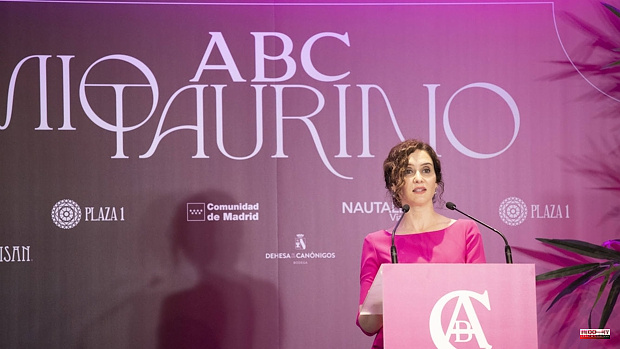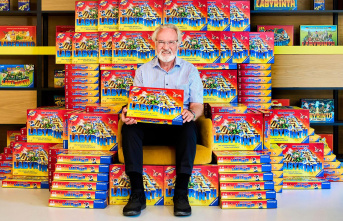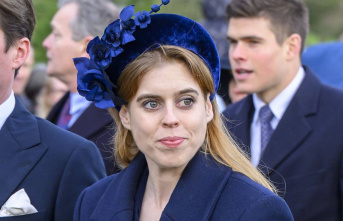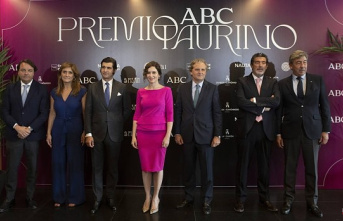Each bull that goes out to the bullring is a metaphor for life as a whole: one risks everything on one card and the world is the spectators, the respectable one. Each bull is different; you have to figure out how to deal with it; and there should be no bad bull for the good bullfighter. This is how intellectuals and artists of all stripes have always understood it.
It is often forgotten that the bulls do not only come from the Goyesque era, from the end of the 18th and 19th centuries: bullfighting shows have centuries of history in Madrid, Spain and Latin America.
They are an essential part of our Golden Age, they are linked to the image of the Plazas Mayores, a symbol of Hispanidad and coexistence: there they met in fun, tradition, friendship, rivalry and love, the same kings and nobles. than the town.
In a bullring, everyone makes themselves heard, and before the bull, no titles are worth more than those of courage and skill.
If we add to this the Greco-Latin origins of bullfighting art, if we think that even the walls of the Altamira caves testify to the relationship between man and the bull, it will be understood why in the Silver Age the fascination with bulls reached a new intellectual and artistic height: Picasso, Federico, Ortega, Zuloaga, or Cossío himself.
For all these reasons, Madrid is the world capital of the bull, in fraternal dispute with some of the most important bullrings in Latin America.
And that is why the ABC, where the Spanish and Latin American language and culture have their home, is also a pillar that supports our national holiday.
From 'Dulzuras' to Vicente Zabala, Gregorio Corrochano or Díaz-Cañabate, all of them sharp feathers, they have been much more than notaries of what happens in the ring. His bullfighting chronicles narrated the historical, political, literary and social evolution of Spain.
In this house, the art of bullfighting is linked to the art of the good chronicle. One with a crutch and rapier, and another from the pages of the press. Bullfighter and journalist have been united in the search for the truth.
For this reason, this edition of the ABC Bullfighting Award is full of History. It consecrates the art in the Morante de la Puebla arena, and the good work of decades curing gorings and saving the lives of bullfighting surgeons. Prowess, in both cases, that today ABC has wanted to recognize.
I begin with José Antonio Morante Camacho, Morante de la Puebla, figure among figures, art and inspiration. This San Isidro gave us a "task worthy of a king", as he precisely titled ABC, although he already has us badly accustomed to his bullfighting with capital letters, with classical roots, almost mystical.
The bullfighter of the expectation at the box office is also the best ambassador of the Festival, and defends it from all stands and, above all, with his unrepeatable performances and his poetry. Congratulations, teacher.
The award for surgeons pays the best possible tribute to the festival of the bull. Those who know closely the infirmaries of the great squares and the mobile operating theaters of the squares throughout Spain say that there is no bullfighter who does not ask from the stretcher when he will return to fight.
The hobby owes much to the vocation of these doctors, lives dedicated to healing the 'war wounds' with which the melee between man and bull is settled.
In this discipline there is no time for preoperative analysis, only uncertainty and immediacy, key to determining the trajectory of a python and saving lives.
These surgeons watch over the health of the artists, from square to square, suffering from their injuries and admiring the strength of the bullfighters. And there is no patient with more desire to heal, strength of spirit to overcome pain and adversity than them, capable of reappearing a month after the mishap. And again. With dedication and excellence. Gore after gore.
Many will know the anecdote of Miguel Abellán, today in charge of the Center for Bullfighting Affairs of the Community of Madrid, of when a python pierced his thigh in the first bull, and he asked that they not give him anesthesia so he could go out to fight the second bull with the tourniquet.
Máximo García Padrós and Carlos Val-Carreres love Medicine and bullfighting in equal parts, and today they collect the award for decades from Madrid and Zaragoza respectively.
In the Community of Madrid, recently concluded San Isidro, we can celebrate that the Festival is in luck. We really wanted bulls. And not just fans, who have enjoyed Sales for 29 runs of emotion and art, with 27 ears and five large doors.
It has also been a great fair due to its economic impact in sectors such as hospitality, tourism, the area's commercial sector or the transport network. It is estimated that the more than 500,000 spectators who have come to the Monumental de Las Ventas during these festivities, including the 11 days with the "no tickets" sign hanging, have brought some 70 million euros to the region. It is demonstrated once again that the world of the bull generates wealth, employment and notable benefits for the Madrid economy.
This has not been another San Isidro. It has been our opportunity to vindicate bullfighting. Once again, Las Ventas has amazed the world with some posters that have brought together the great figures, bullfighters, bullfighters and ranchers, during a festival that the Community of Madrid already protects as an Asset of Cultural Interest.
With great joy we have once again seen His Majesty King Felipe VI in the square and we have recovered the traditional bullfight of the press.
The show and the passion, in short, have returned strongly this season in Madrid, where the regional government supports bullfighting with pioneering initiatives.
For example, we have successfully launched the Madrid Community Bullfighting Circuit and the Chenel Cup, a competition for bullfighters, in addition to repeating the Esteban Ferre trophy for trimmers, which was a real success in 2021, and which is also a great opportunity for the livestock sector.
Let us remember that without the festival the fighting bull would not exist. And the Community of Madrid, with its 70 fighting bull farms, is the one with the highest density of wild cattle per square kilometer. For this reason, we are promoting them with measures such as the last line of direct aid to ranchers of wild cattle, worth 3 million euros.
We also want to bring the Festival closer to all corners of the region, promoting cultural and rural tourism in the different municipalities that will host the bullfights and competitions.
An authentic traveling fair will bring life and joy to the municipalities. From San Martín de Valdeiglesias, where the bullfight final will take place on July 10, to Valdetorres del Jarama, which will host the Chenel Cup six days later.
They will be joined by Cadalso de los Vidrios, Miraflores de la Sierra, Alalpardo, Anchuelo, Estremera, Las Rozas de Puerto Real, El Álamo, San Agustín de Guadalix, Villarejo de Salvanés, Valdilecha or Valdetorres.
And of course, we continue betting on the future of the party. In the Venta del Batán, which for decades was a source of inspiration for families living in the countryside in the heart of Madrid, a new quarry of bullfighters has been formed since December, who already receive their practical classes there. Very soon we will also have the bulls in the famous corrals in the sleeves of Batán.
The budget, of course, makes our commitment clear. This year we have planned an allocation of 1.4 million euros to finance the Festival, which represents an increase of half a million euros compared to last year.
We have almost forgotten our tradition of navigators, adventurers, discoverers (and hopefully it will return in some way); but this one of the bulls, and all that it entails, fortunately is still alive, although they have not made it easy for her in recent times.
Because the art that the bulls symbolize is, paradoxically, the art of living. Madrid, as Andrés Calamaro defined it in his Third of ABC last Sunday, his "second move from Madrid." And knowing how to live fully is, in the eyes of the world, synonymous with Madrid and Spain.












